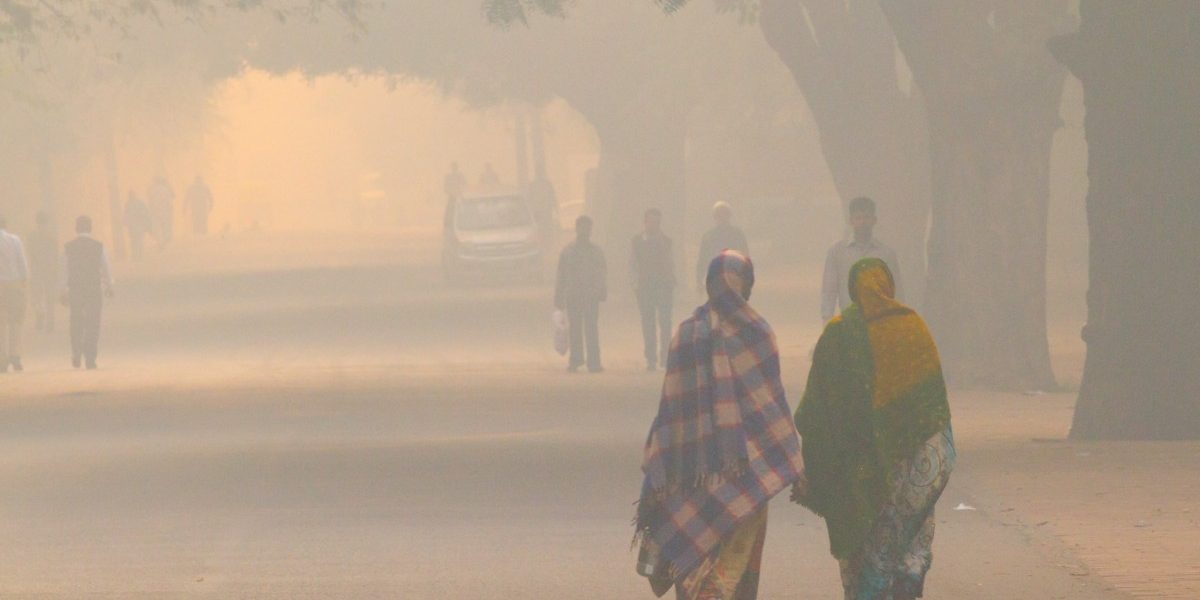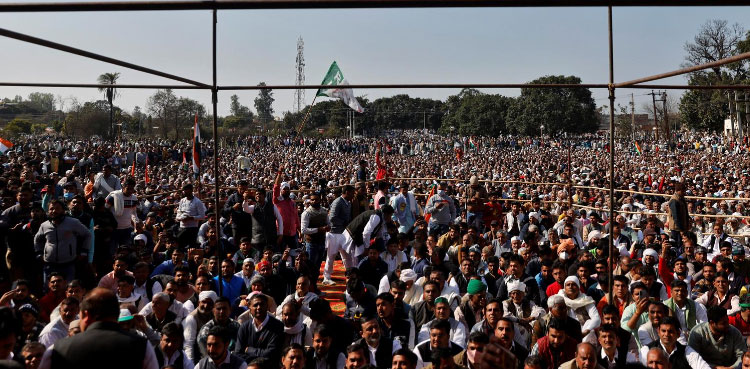
Kochi: New Delhi and Kolkata are the most polluted cities in the world. According to the latest State of Global Air report on air quality and health in cities published on August 17, these cities rank the highest when it comes to levels of fine particulate matter, a major air pollutant. Mumbai is 14th on the list.
Several of India’s cities face high levels of air pollution. Earlier this year, another global report – the World Air Quality Report 2021 – listed New Delhi as the capital city with the most polluted air for the fourth consecutive year. Though the government launched the National Clean Air Programme in 2019 to reduce levels of particulate matter by 20-30% by 2024, an analysis in January this year found that levels of air pollution in most of the 132 cities in India targeted under this programme have either “marginally improved” or increased since then.
PM2.5 levels in Delhi averaged 110 μg/m3, making it the world’s most polluted city in this respect. Source: A State of Global Air Report 2022
Fine particulate matter (PM2.5) and nitrogen dioxide (NO2) are two major air pollutants in cities and urban areas worldwide. PM2.5 consists of airborne, inhalable particles less than 2.5 micrometres (µm) wide, and are emitted from fossil fuel use, industries, factories, vehicular engines, fires, dust from construction sites, etc. Exposure to this pollutant can cause a range of illnesses, from respiratory and heart diseases to cancers and strokes.
According to a recent study, breathing ambient air with unsafe levels of PM2.5 causes approximately four million early deaths each year, globally. Of this, 25% of deaths occur in India. The annual average levels of PM2.5 over an area should not exceed 40 µg/m3 as per India’s apex statutory body for pollution control, the Central Pollution Control Board (CPCB). The World Health Organisation (WHO), however, has set a more stringent limit, 5 µg/m3.
NO2 is a gas that stems mostly from vehicles and industries (when fossil fuel is burnt). Long-term exposure to this gas has been linked with deaths. The current WHO guideline for the annual average concentration of NO2 is 10 μg/m3.
Levels of both these pollutants were taken into account in the latest Air Quality and Health in Cities report published by the State of Global Air, a collaboration between the US-based Health Effects Institute (HEI) and the Institute for Health Metrics and Evaluation’s Global Burden of Disease Project.
The report summarises data on air pollution exposures and associated health impacts caused by these pollutants in 7,239 cities between 2010 to 2019. Of these, 1,503 are from South Asia. The report used data from satellite imagery and ground measurements. The latter included publicly available data from 3,787 air quality monitoring stations across 63 countries for PM2.5, and 5,220 air quality monitors from across 58 countries for NO2.
It found that global patterns for exposures to the two key air pollutants were very different. While exposures to PM2.5 pollution tend to be higher in cities located in low- and middle-income countries, exposure to NO2 is high across cities in high-income as well as low- and middle-income countries.
In 2019, PM2.5 exposures averaged at 34.6 μg/m3 across 7,239 cities, ranging from 0.1 μg/m3 in Trabzon, Turkey, to 133 μg/m3 in Jhusi, India.
The cities in South Asia, West Sub-Saharan Africa and East Asia reported exposures to PM2.5 higher than 35 μg/m3 (the least stringent WHO limit). India and Indonesia witnessed the most severe increase in PM2.5 pollution, while China experienced the greatest improvements. India is home to 18 of the 20 cities with the most severe increase in PM2.5 pollution (more than 30 μg/m3) from 2010 to 2019; the other two cities are in Indonesia. Of the 50 cities with the most severe increase in PM2.5, 41 are in India and nine are in Indonesia.
Of the 103 most populous cities across 21 different regions of the world, three Indian cities made it to the top 20 with the highest population-weighted annual average PM2.5 exposures in 2019 – New Delhi, Kolkata and Mumbai.
PM2.5 levels in Delhi averaged 110 μg/m3, making it the world’s most polluted city in this respect. Kolkata came second in the list, with average PM2.5 levels of 84 μg/m3. Mumbai too found a place here, ranking 14th with average PM2.5 levels of 45.1 μg/m3.
Such levels of particulate matter translate into health burdens too, and the State of Global Air calculated these based on several factors including the relationship between different levels of PM2.5 and increased risk of death due to illnesses caused by pollution and population size.
In South Asia, the above-mentioned three cities in India, along with Dhaka in Bangladesh and Karachi in Pakistan showed higher death rates than the global urban median (58 deaths/100,000 people). Delhi and Kolkata feature in the top 20 of the 103 most populous cities in each region which had the highest PM2.5-related disease burden in 2019 (quantified at 106 and 99 deaths per 1,00,000 people, respectively).
Overall, cities in East, South, and Central Asia and those in Central and Eastern Europe witnessed a disproportionately high disease burden from PM2.5 exposures.
With respect to NO2, the global average was 15.5 μg/m3 – higher than the WHO limit of 10 μg/m3. Out of the 103 most populous cities across all 21 regions, 81 reported higher NO2 exposures than the global average.
“As cities around the world rapidly grow, the impacts of air pollution on residents’ health are also expected to increase, underscoring the importance of early interventions to reduce exposures and protect public health,” said Pallavi Pant, HEI senior scientist, who oversaw the report’s publication, in a press release.
Many cities in India face high levels of air pollution. So much so that in 2019, the Union government launched the National Clean Air Programme (NCAP) to reduce levels of particulate matter in 132 target cities by 20-30% by 2024. Funds amounting to Rs 472.06 crore have been released since then, but states have utilised only less than half of it, said minister of state for environment, forest and climate change Ashwini Kumar Choubey in a written reply in the Lok Sabha on August 1.
As mentioned before, despite crores being spent on these cities, an analysis in January found that air pollution in most of the 132 cities has only either “marginally improved” or, even worse, increased since then.
According to the World Air Quality Report 2021 – which put New Delhi at the top of its list of most polluted capital cities – India was also among the top five countries with the world’s lowest air quality. The report said that 12 of the 15 cities in Central and South Asia with the worst air in 2021 were in India. The Wire


